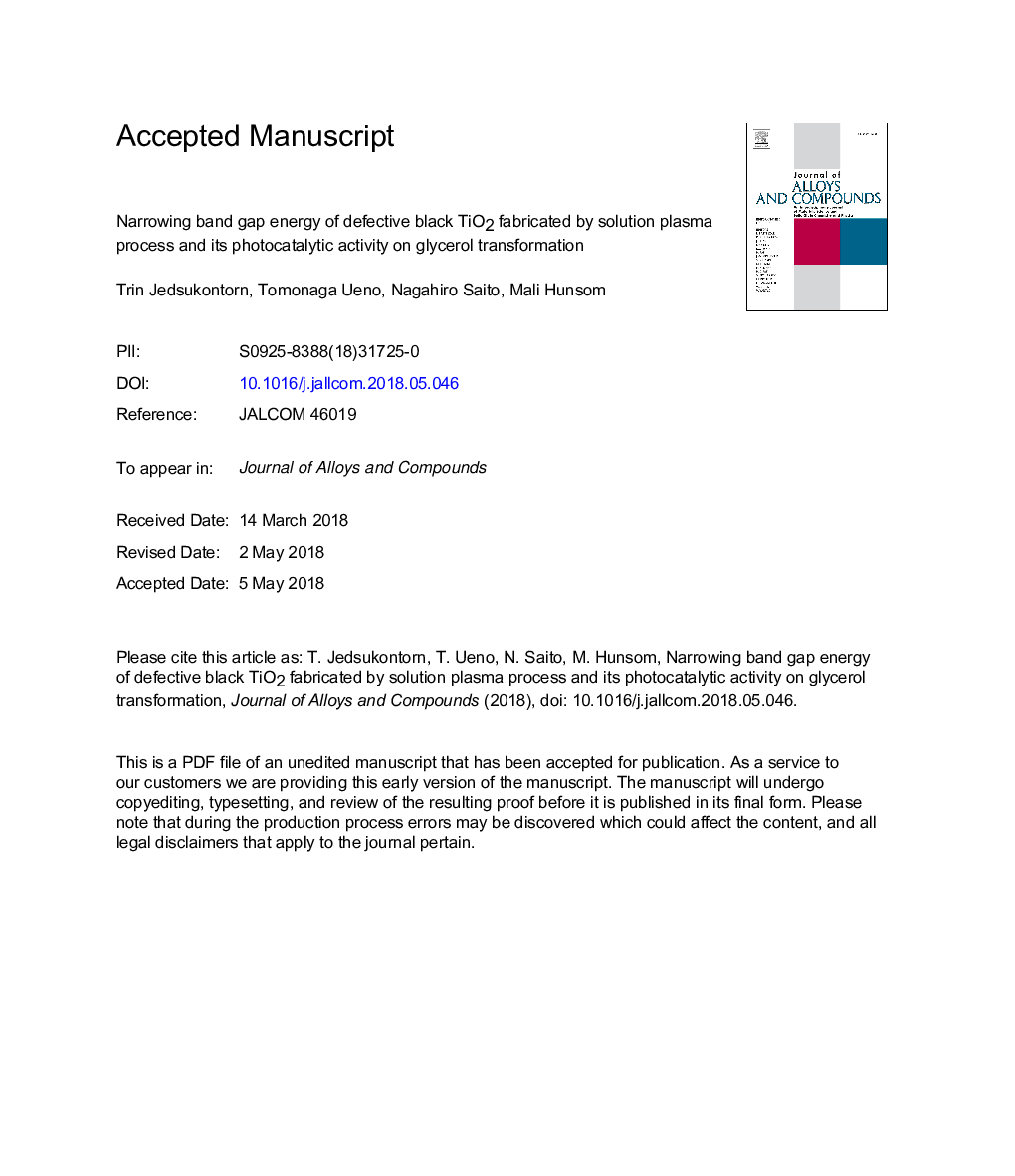| Article ID | Journal | Published Year | Pages | File Type |
|---|---|---|---|---|
| 7991184 | Journal of Alloys and Compounds | 2018 | 40 Pages |
Abstract
Defective black titania (TiO2) was synthesized by the solution plasma technique at ambient temperature and pressure. The effects of the electrolyte solution medium type (KCl and HNO3) and concentration (0.3 and 3.0â¯mM) as well as the plasma discharge time (1-4â¯h) with a Ti electrode were investigated. The 3.0â¯mM HNO3 solution provided the highest energy per second discharging into the plasma, resulting in both a high synthesis rate of black TiO2 and a high degree of defective structures, as monitored in terms of the Ti3+/Ti4+ ratio, which can shorten the band gap energy (Eg) of the obtained black TiO2. A long plasma discharge time (4â¯h) induced the formation of large particles of black TiO2, which appeared as a highly defective structure. Overall, the black TiO2 prepared by discharged plasma for 4â¯h in 3.0â¯mM HNO3 solution (BTN-304) provided the highest photocatalytic activity for glycerol conversion (58.49% at 24â¯h) and 4.85, 3.32, 2.11, 2.15, 39.15 and 26.61% yield of glyceraldehyde, dihydroxyacetone, hydroxypyruvic acid, glycolic acid, glycolaldehyde and formaldehyde, respectively. Pathway of glycerol conversion and product distribution over black TiO2 was attempted to propose. Finally, the reusability of the best black TiO2 was explored.
Related Topics
Physical Sciences and Engineering
Materials Science
Metals and Alloys
Authors
Trin Jedsukontorn, Tomonaga Ueno, Nagahiro Saito, Mali Hunsom,
